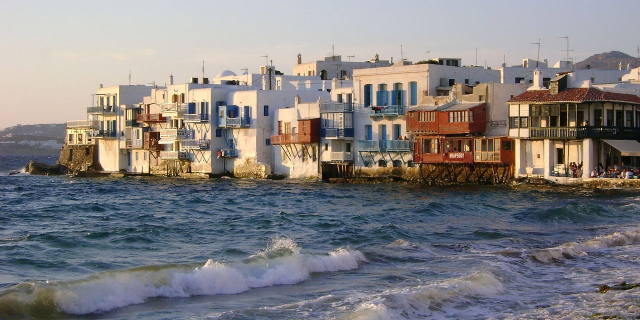Akrotiri (Greek: Ακρωτήρι, pronounced Greek: [akroˈtiri]) is the site of a Cycladic Bronze Age settlement on the volcanic Greek island of Santorini (Thera). The name comes from the nearby village of Akrotiri.
The settlement was destroyed in the Theran eruption sometime in the 16th century BCE and buried in volcanic ash, which preserved the remains of fine frescoes and many objects and artworks. Akrotiri has been excavated since 1967 after earlier excavations on Santorini.
The earliest evidence for human habitation of Akrotiri can be traced back as early as the fifth millennium BCE when it was a small fishing and farming village. By the end of the third millennium, this community developed and expanded significantly. One factor for Akrotiri's growth may be the trade relations it established with other cultures in the Aegean, as evidenced in fragments of foreign pottery at the site. Akrotiri's strategic position on the primary sailing route between Cyprus and Minoan Crete also made it an important point for the copper trade,[1] thus allowing it to become an important centre for processing copper, as proven by the discovery of moulds and crucibles there. Akrotiri's prosperity continued for about another 500 years; paved streets, an extensive drainage system, the production of high-quality pottery and further craft specialization all point to the level of sophistication achieved by the settlement.
This all came to an end, however, in the 16th century BCE with the volcanic eruption of Thera. There is a variety of dating evidence for the eruption, but its exact year is not known. Radiocarbon dating places it most probably between 1620 and 1530 BCE, which is also in accord with the date range of 1570 to 1500 BCE suggested by similarities of the material culture with other sites in the Aegean. Unusual growth patterns observed in tree rings in 1597, 1560, 1546 and 1544 BCE are consistent with a major volcanic event in any of those years. The latter three dates might be the best candidates as they are also considered possible for Egyptian New Kingdom records that are thought to refer to the eruption.[2]































Add new comment